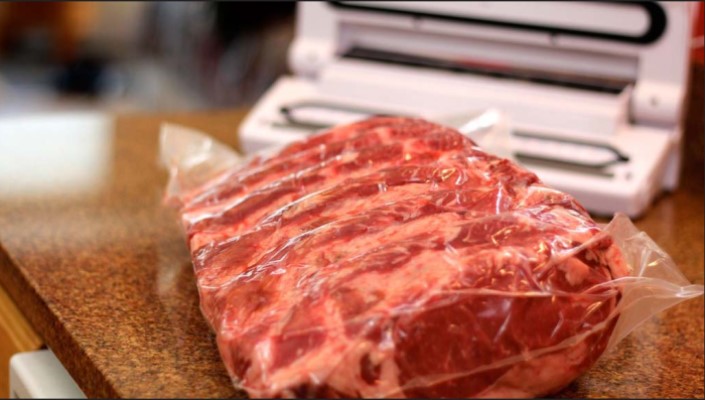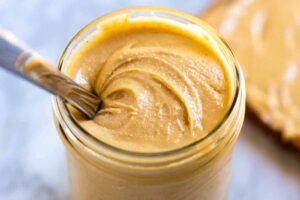
If you’re a meat enthusiast, you’ve probably heard about dry aging. This time-honored culinary technique has gained popularity among home cooks and professional chefs alike. Dry aging enhances the flavor and tenderness of meat, creating a unique and unforgettable dining experience. But what exactly is dry aging, and how can you do it at home? In this ultimate guide to dry aging meat, we’ll dive deep into the process, techniques, and tips to achieve perfectly dry-aged meat right in your kitchen.
The Science Behind Dry Aging
Before we delve into the details, let’s understand the science behind dry aging. During the dry aging process, whole cuts of meat are exposed to controlled conditions, typically refrigerated and well-ventilated environments. This controlled aging allows enzymes to break down the muscle fibers, tenderizing the meat, while the evaporation of moisture concentrates its flavor. The result is a richer, more intense taste that is highly sought after by meat connoisseurs.
Choosing the Right Cuts for Dry Aging
Not all cuts of meat are suitable for dry aging. To get the best results, you need to select the right cuts with a good amount of marbling. Prime rib, ribeye, and striploin are some of the most popular choices for dry aging due to their abundant fat content and excellent flavor profile. In this section, we’ll explore the best cuts for dry aging and why marbling is crucial for the process.
Preparing Your Meat for Dry Aging
Once you’ve chosen the perfect cut of meat, it’s time to prepare it for the dry aging process. This step is critical to ensure food safety and achieve the desired results. We’ll guide you through the steps of trimming, seasoning, and wrapping the meat for dry aging. Additionally, we’ll cover the importance of using quality dry aging bags and the difference between wet and dry aging methods.
Setting Up a Dry Aging Environment
Creating the right environment is key to successful dry aging. You’ll need to set up a dedicated space in your refrigerator or invest in a specialized dry aging fridge. Temperature, humidity, and air circulation play vital roles in the process. Learn how to calibrate your equipment and maintain the ideal conditions for safe and effective dry aging.
Dry Aging Time and Factors Affecting It
The duration of dry aging directly impacts the flavor and tenderness of the meat. The question of how long to dry age meat depends on various factors, including the type of meat, desired taste intensity, and personal preferences. Discover the factors affecting dry aging time and how to determine the optimal duration for your chosen cut of meat.
Monitoring and Inspecting the Dry Aging Process
While patience is key during the dry aging process, it’s also essential to monitor and inspect the meat regularly. Learn how to check for spoilage, mold, and off-flavors to ensure your dry-aged meat is safe and delicious. We’ll provide you with expert tips on when to end the aging process and move on to the next steps.
Trimming and Cutting the Dry-Aged Meat
After the appropriate aging period, it’s time to reveal the transformed meat and prepare it for cooking. Trimming the dry-aged meat requires precision and care to remove any dried crust and reveal the perfectly aged meat beneath. We’ll walk you through the trimming and cutting process, ensuring you get the most out of your dry-aged meat.
Cooking Dry-Aged Meat to Perfection
Cooking dry-aged meat is an art that requires attention to detail. The unique properties of dry-aged meat demand specific cooking techniques to preserve its tenderness and flavor. From grilling to sous vide, we’ll cover the best cooking methods for different cuts of dry-aged meat, so you can enjoy a restaurant-quality dining experience at home.
Pairing Dry-Aged Meat with the Perfect Wine
To elevate your dry-aged meat feast, you’ll want to pair it with the perfect wine. The right wine can complement and enhance the flavors of the meat, creating a harmonious culinary symphony. Uncover the secrets of wine pairing and explore the best wine choices to serve with your dry-aged masterpieces.
Storing and Preserving Dry-Aged Meat
If you have more dry-aged meat than you can consume in one sitting, proper storage becomes essential. Improper storage can compromise the quality and safety of your precious dry-aged cuts. Learn the best practices for storing and preserving dry-aged meat to savor the fruits of your labor over an extended period.
Frequently Asked Questions (FAQs)
Can I dry age meat at home without any specialized equipment?
Answer: Yes, you can dry age meat at home using a dedicated space in your refrigerator and dry aging bags. While specialized equipment can offer better control, DIY dry aging is entirely possible.
How long should I dry age a ribeye for the best flavor?
Answer: For a balanced and intense flavor, dry age a ribeye for around 30 to 45 days. However, some individuals prefer longer aging for a more robust taste.
Is dry aged meat safe to eat?
Answer: When done correctly, dry aging is a safe process that enhances the quality of the meat. Regular inspection and adherence to food safety guidelines are essential.
Can I dry age other types of meat, such as poultry or pork?
Answer: Dry aging is most commonly practiced with beef due to its higher fat content. While you can experiment with other meats, the results may vary.
What is the ideal temperature and humidity for dry aging meat?
Answer: The ideal temperature for dry aging is around 34°F to 38°F (1°C to 3°C), with humidity levels between 75% to 85%.
Can I freeze dry-aged meat?
Answer: Freezing dry-aged meat is possible, but it’s best to consume it fresh to enjoy the full benefits of dry aging.
Conclusion
Congratulations! You’ve now become well-versed in the art of dry aging meat. From choosing the right cuts to perfecting the dry aging environment and cooking techniques, you have all the tools to create mouthwatering, restaurant-quality dishes at home. Remember to be patient, as dry aging requires time and attention to detail, but the results are undeniably worth it. So, why not try your hand at dry aging meat and take your culinary skills to a whole new level?
Anyone who loves meat as much as I do needs to try dry aging. You may or may not have heard of dry aging, put simply it is a process that involves hanging meat in a temperature and humidity-controlled environment.
Originally, the purpose of dry aging was to preserve the meat for longer before fridges and freezers had been invented. It is said to date back as early as medieval times and back then, caves would have been used. As time progressed, so did the method of dry aging, people began moving from caves to using cellars. Today, the purpose of dry aging has changed from a method of preservation into a delicacy that naturally amplifies the taste and texture of meat. Instead of using caves and cellars, most of the time people use fridges to dry age their meat, the fridge I use is by Steak Locker.
How long does the meat aging process take?
One question I often get asked is ‘how long does dry aging take’, as it is notoriously a longer process than other methods of aging and preservation. In my experience, the length of time is dependent on a number of factors, such as the type of meat, the cut of meat and most importantly, personal preference. I would always suggest when dry aging to allow the process to take place for at least 30 days as before this, you are unlikely to reap any benefits of the dry aging process.
In 30 days, umami and mushroom flavours will have started developing, the yield of the meat will have decreased as the moisture is concentrated and drawn out of the meat and the texture will be starting to improve. If you want to experience the true results of dry aging, I recommend leaving your meat to dry age for around 45 days, at this point you can expect to taste bold notes of blue cheese and a melt in the mouth texture.
If you are feeling particularly adventurous and can appreciate the funky flavours associated with long term dry aging, you could even let the process evolve from 70-90 days. Personally I find a steak that has been aged longer than 60 days too strong but it’s still worth giving it a go.
Which meat should I dry age?
Another popular question I get asked is which meat is best to dry age, and the answer to that is beef- every single time. The reason why beef is the best meat for dry aging is because dry aging significantly improves the beef’s texture whilst developing intense and unique flavours that are unmatched by any other method. Beef is also more resilient to the dry aging process meaning it can be aged for much longer periods of time than any other kind of meat.
If you want to explore different meats when dry aging, it is possible to dry age pork, fish or even turkey which is a surefire way to impress guests next thanksgiving. It’s important to remember that when dry aging meats other than beef, they are more delicate and susceptible to spoilage, therefore you will need to monitor them closely and ensure you do not leave them to dry age for too long.
What is a dry age fridge?
Although it is possible to dry age meat using a regular fridge, you are guaranteed to get the best results when using a specially designed fridge made just for dry aging like Steak Locker, the world’s first smart dry age fridge. This is because a dry age fridge gives you the right amount of space to hang the meat as well as allowing you to set the right temperature and humidity levels to get the best result..
The fridge I use has an integrated smartphone app which allows you to track the progress of your meat whilst monitoring the temperature and humidity inside the fridge which helps to minimise the risk of spoilage.
Final thoughts
Sure, if you don’t feel the need to invest in a dry aging fridge and want to first try the method in a normal fridge, you can do that too. However, I would always suggest using a fridge that is separate from your usual fridge. This is because of the risk of cross contamination of flavours whereby your milk may end up tasting like dry aged meat, or worse, your meat could end up tasting like mouldy milk. What’s more, every time you open the fridge door to access other products, you are constantly affecting the temperature and humidity levels inside the fridge which can increase the risk of spoilage.
Thanks for reading!








